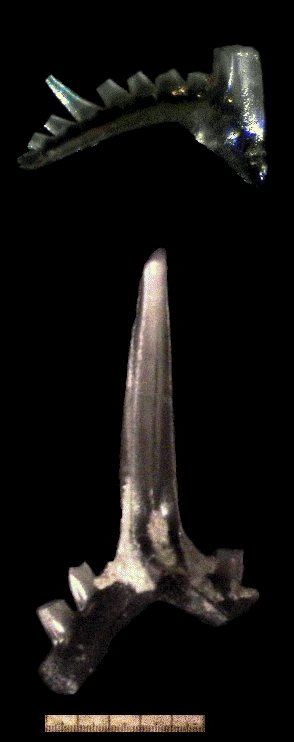The Cambrian's strangest animals were wiped out by a catastrophe. But life soon returned to the Ordovician period in astonishing variety. Gardens of filter-feeding brachiopods thrived beneath gently waving "sea lilies” on ropy crinoid stalks patrolled by a dazzling gallery of bug-eyed trilobites. Sponges nestled among the interlocking arms of coral-like bryozoans. Ammonites and many-armed nautiloids bigger than wagon wheels drifted above the seafloor and probed for food with their tentacles. Most of these animals were armor-plated, possibly to protect against a new and deadly predator armed with a weapon never before seen on Earth. Tiny, eel-shaped conodonts boasted a modern body design that included eyes, a notochord, and mouths bristling with sharp, rasping teeth. They did not have a movable jaw and their soft bodies left few fossils, but the bedrock of Nashville is filled with obdurate jewel-like fangs of this one-time piranha of the Ordovician.
The world's landmass piled together into the mostly submerged mega-continent of Gondwana, barren and alien, with no life except for moss and lichens. This cozy water-world must have seemed like paradise to the lush, complex ecosystems of the Ordovician. But this paradise was destined to have an ugly end.
As the Earth wobbled slowly through its orbit and Gondwana drifted toward the polar region, snow began to accumulate on the continent, creating a vast, runaway ice pack. Reflecting more light, the planet cooled, and the oceans shrank and became saltier as glaciers sucked away moisture. The result was Earth’s worst nightmare -- a sudden shift from a warm tropical climate to a bleak ice world of chilled, brackish seas. The second-worst extinction in our planet’s history would end the Ordovician paradise forever, and nudge the history of life into a new stage -- the Silurian.
|

Nashville Conodonts, scale 0.5 mm
|